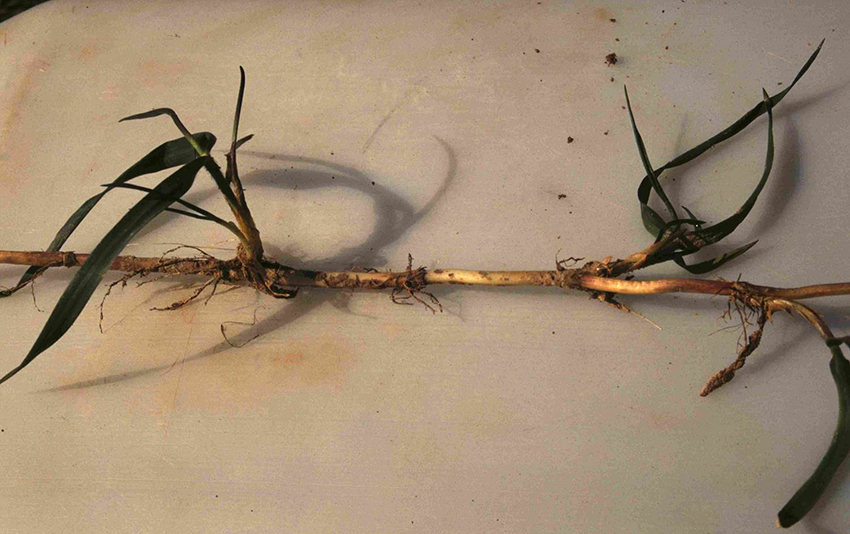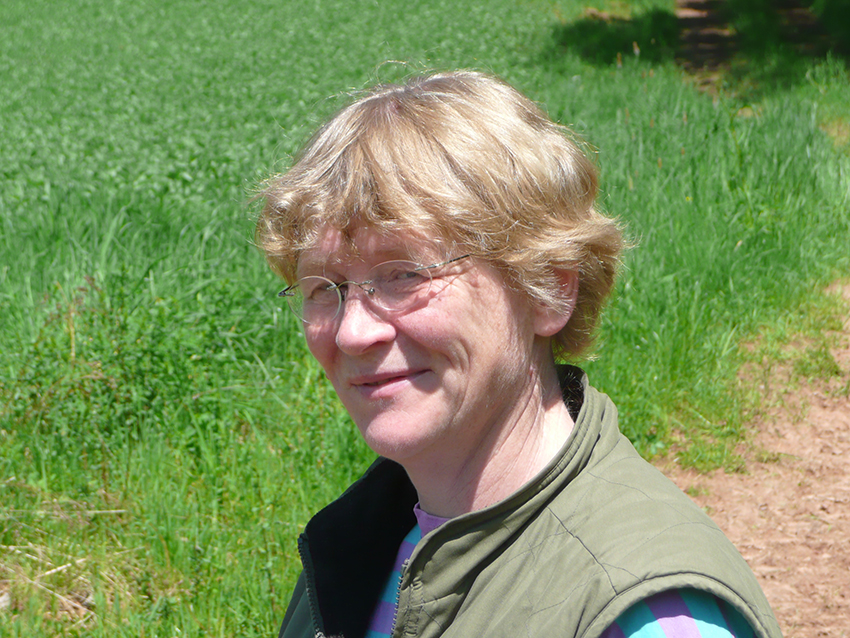Applying and Combining Disturbance and Competition for an agro-ecological management of creeping perennial weeds

Source: Horst-Henning Steinmann
The objective of AC/DC-weeds is to implement more and better agro-ecological management for creeping perennials in arable farming. Overall aim is to reduce plough-tillage in organic and conventional farming, and to replace glyphosate use in the latter system. Cropping systems with less herbicide use to control perennial weeds put less pressure on the environment, is more resilient and allow more biodiversity in the annual weed vegetation.
Novel approaches for agro-ecological management of perennial weeds demand to exploit, combine and evaluate cultural and physical control and bio-based herbicides. Creeping perennials are suppressed by disturbance/competition. Thus, an agro-ecological management must suitably activate these processes. We are investigating new managements based on better understanding of these processes.
Seven partners from 5 European countries, representing Central and Northern European climatic and arable conditions collaborate in the project AC/DC-weeds. It is organized in 7 work packages, which use the most promising methods regarding the state of knowledge, expected results and envisaged outreach.

Source: Horst-Henning Steinmann
New ways of applying disturbance subterranean without turning the soil are being examined in field experiments together with defoliation strategies via cutting/bio-based herbicides. Results from joint field experiments test efficacy and practicability of these new ways. The effects of competition on creeping perennials are under investigation. Existing results are systematized by meta-analyses. The excerpting knowledge feeds a trait-based joint database. Specific data for Elymus repens, Cirsium arvense and Sonchus arvensis are pooled, knowledge gaps are addressed through semi-field experiments. Three partners are tidying existing knowledge for these species and running collaborative semi-field experiments (pot and field trials for S. arvensis and C. arvense, and field trials for E. repens at 1-3 locations).
Due to the patchiness of perennials it is vital to monitoring whole fields. We are spatially monitoring perennials with available tools like cameras/sensors installed in drones/vehicles. Reliable algorithms are under development to monitor perennials. Qualitative models to analyse the impact of cropping practices, soil, weather and field environment on perennial infestations are being designed. These models combine data from various sources including literatures, surveys and experiments, expert opinions and simulation models. With the help of a novel interactive graphical web tool spatial visualization of various scenarios of disturbance and competition are being developed.
Coordination ensures data flow, exchange and communication among partners. A data framework is provided to feed experimental results, descriptive and analytical traits and species-based approaches into technological applications. Dissemination of the results is coordinated and supported. As outreaching results aim to alter cropping technologies, evaluation of effects on the environment and economics are being conducted. AC/DC-weeds addresses a range of stakeholders from the land use sector. Communication and dissemination are targeting advisors and farmers in conventional and organic farming and other stakeholders like land owners and nature conservation.

Source: Bärbel Gerowitt
Prof Bärbel Gerowitt
University of Rostock (UR), Faculty of Agricultural and Environmental Sciences - Crop Health, GERMANY
Prof Lars Olav Brandsæter
Norwegian University of Life Sciences (NMBU), Faculty of Biosciences, Department of Plant Sciences, NORWAY
Dr Kirsten Tørresen
Norwegian Institute of Bioeconomy Research – NIBIO, Department of Invertebrate Pests and Weeds, NORWAY
Dr Jukka Salonen
Natural Resources Institute Finland (Luke), Natural Resources, FINLAND
Dr Jesper Rasmussen
University of Copenhagen, Department of Plant and Environmental Sciences, DENMARK
Dr Marie-Helene Robin
INRA, UMR AGIR - AGroecologies, Innovations & Ruralities, FRANCE
Dr Muriel VALANTIN-MORISON
INRA UMR agronomie, environnement et agronomie, FRANCE
2023
Ganji, E., Grenzdörffer, G., and Andert, S. (2023). Estimating the Reduction in Cover Crop Vitality Followed by Pelargonic Acid Application Using Drone Imagery. Agronomy 13(2), 354.
Weigel, M.M., Andert, S., and Gerowitt, B. (2023). Monitoring Patch Expansion Amends to Evaluate the Effects of Non-Chemical Control on the Creeping Perennial Cirsium arvense (L.) Scop. in a Spring Wheat Crop. In Agronomy 13 (6), 1474.
2022
Andert, S., Weigel, M., Ganji, E., and Gerowitt, B. (2022). Visualizing growth of Cirsium arvense (L.) scop. for farmers. Julius-Kühn-Archiv, 468, 105-109.
Ganji, E., Andert, S., and Gerowitt, B. (2022). The herbicidal potential of pelargonic Acid to control Cirsium arvense (L.) scop. in relation to the timing of application and the application volume. Julius-Kühn-Archiv, 468, 86-93.
Gerowitt, B., Andert, S., Brandsæter, L. O., Rasmussen, J., Robin, M-H., Salonen, J., Tørresen, K. S., and Zhang, H. (2022). The challenges of arable creeping perennial weeds in research, management and perception addressed in the joint project AC/DCweeds. Julius-Kühn-Archiv, 468, 68-72.
Lacroix, O., Robin, M-H., Aubertot, J.-N., Bohanec, M., and Cordeau, S. (2022). IPSIM-Cirsium, a qualitative expert-based model to predict infestations of Cirsium arvense. Julius-Kühn-Archiv 468, 94–99.
Tørresen, K. S., Ringselle, B., Brandsæter, L. O., and Salonen, J. (2022). Autumn mowing and pelargonic acid can suppress Elymus repens abundance especially when combined with increased crop competition. Julius-Kühn-Archiv, 468, 100-104.
Tørresen, K. S., and Gerowitt, B. (2022). Late autumn ramet sprouting of three arable creeping perennial weed species. Agronomy, 12 (9) 2175.
Weigel, M., and Gerowitt, B. (2022). Mechanical disturbance of Cirsium arvense - Results from a multi-year field study. Julius-Kühn-Archiv, 468, 79-85.
2021
Andert, S., Ziesemer, A., and Zhang, H. (2021). Farmers' perspectives of future management of winter oilseed rape (Brassica napus L.): A case study from north-eastern Germany. European Journal of Agronomy, 130, 126350.
Lacroix, O., Aubertot, J.-N., Bohanec, M., Cordeau, S., Corrales, D. C., and Robin, M.-H. IPSIM-Cirsium, a Qualitative Expert-Based Model to Predict Infestations of Cirsium arvense. Frontiers in Agronomy, 3. DOI=10.3389/fagro.2021.655383
Lati, R. N., Rasmussen, J., Andujar, D., Dorado, J., Berge, T. W., Wellhausen, C., Pflanz, M., Nordmeyer, H., Schirrmann, M., Eizenberg, H., Neve, P., Jørgensen, R. N., and Christensen, S. (2021). Site-specific weed management — constraints and opportunities for the weed research community: Insights from a workshop. Weed Research, 61, 147-153.
Rasmussen, J., Azim, S., and Nielsen, J. (2021). Pre-harvest weed mapping of Cirsium arvense L. based on free satellite imagery – The importance of weed aggregation and image resolution. European Journal of Agronomy, 130, 126373.
2020
Andert, S., and Gerowitt, B. (2020). Controlling arable weeds with natural substances as bio-based herbicides. In H. Nordmeyer & L. Ulber (Eds.), Tagungsband : 29. Braunschweig 464, 407–414.
Salonen, J., Brandsæter , L. O., Gerowitt, B., Rasmussen, J., Robin, M-H., Tørresen, K. and Valantin-Morison, M. (2020). Agro-ecological management of creeping perennial weeds (AC/DC-weeds). Suomen Maataloustieteellisen Seuran Tiedote, 37, 313.
Zhang, H., Andert, S., Brandsæter, L. O., Rasmussen, J., Robin, M-H., Salonen, J., Tørresen, K. S., Valantin-Morison, M., and Gerowitt, B. (2020). Future management of arable perennials - an introduction to the project AC/DC-weeds. Julius-Kühn-Archiv, 464, 280-285.
2019
Tørresen, K. S., Fykse, H., Rafoss, T., and Gerowitt, B. (2019). Autumn growth of three perennial weeds at high latitude benefits from climate change. Global Change Biology, 26 (4), 2561-2572.